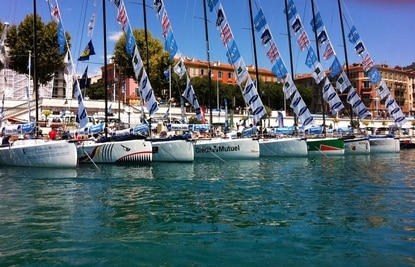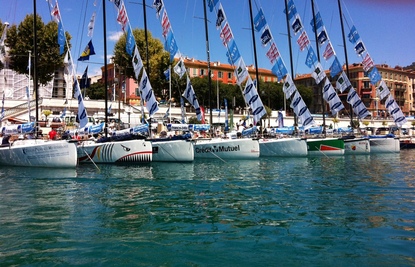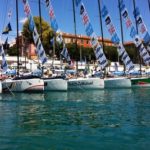After four editions on the M34 monohull, the management of the Tour de France sailing race has decided to switch to multihulls, a format very much in tune with the times. Enter the Diam 24, more economical, more accessible, and which will bring the races closer to the general public.

“The M34 launched in 2011 did not gather as much interest as we hoped. We started thinking about this at the beginning of the year, consulted extensively, and this choice of the Diam 24 will unite French sailing,” explained Jean-Baptiste Durier, director of the Tour de France à la voile.
It’s a clear and straightforward revolution because, since the creation of the Tour de France à la voile in 1978, all editions have been held on monohulls. “In terms of sport and media, if everyone is on board, we need to go for it. It would be a mistake not to evolve,” says Daniel Souben, skipper of Courrier Dunkerque, winner of the 2014 edition.
The relocation stages from one city to another are also finished, a regret for the French Sailing Federation and its president, Jean-Pierre Champion: “For our offshore racing training, it’s a setback, we regret it. For the 2015 edition, we will therefore have a modern format (editor’s note, the multihull) which will become prevalent in the coming years.”
To replace these 24-hour or even longer exciting stages, the management will implement more attractive coastal courses with both start and finish in the same city. “There was a real imbalance between life on land and sporting life,” explained the director of the TDF à la voile. “The regattas will regain momentum and we will be able to showcase magnificent locations as the Tour de France cyclist does today.”
For the 2015 edition, the race format will not change with a Tour lasting three weeks and spanning between 8 and 10 stage cities. With the arrival of multihulls, the management hopes to double the number of participants compared to the 2014 edition, which means around twenty instead of nine this year. The final course will be unveiled at the Paris Boat Show (from December 6 to 14).



